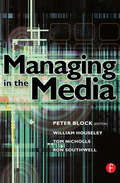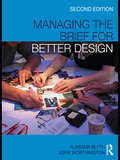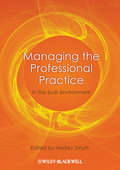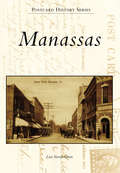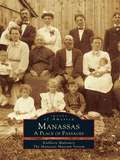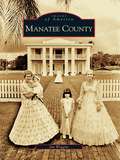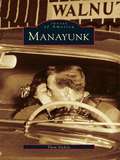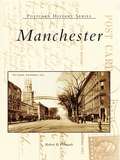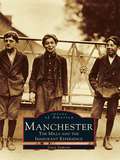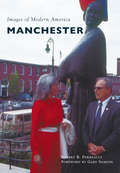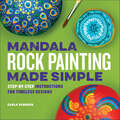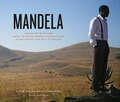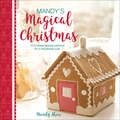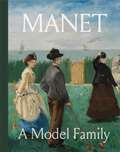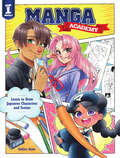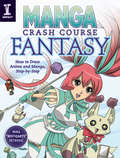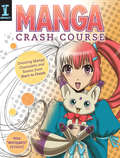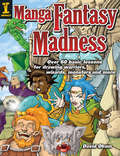- Table View
- List View
Managing in the Media
by Pamela Block Ron Southwell Tom Nicholls William HouseleyManaging in the Media has been devised for a broad audience. It is based upon the perceived need for a text that amalgamates cultural theories, film and television analysis, management theories and media production practice into one volume. There are many books on film and cultural studies. Similarly, there are copious numbers of texts written on management. To date little has been written that analyses the management of the audiovisual industry set against the backdrop of the cultural and economic environment within which the media manager operates. Managing in the Media is divided into three sections that take the reader from the global to the specific, from the strategic to the tactical. Each chapter discusses specific topics that can be read in isolation yet contribute to the theme within each part. Taken as a whole, the book provides the potential professional media manager and current practising media manager with a framework of issues that will give them an awareness of the range of knowledge needed by the successful media manager. This book does not try to be a manual to success. The media industry is awash with successful individuals none of whom needed textbooks to set them on their chosen career paths. Yet these exceptional people prove the rule; that in the main, most media practitioners would benefit from some additional support and guidance. The aim of this book is to present to them some of the management issues that have, or will have, an impact upon their working careers. The accompanying website www.mediaops.net (which can also be accessed via www.focalpress.com) features:- Tutor notes and reader activities- Updated list of further reading- Additional support material such as production templates - Interviews with the authors - A discussion forum- Industry and education links- Media News
Managing the Brief for Better Design
by Alastair Blyth John WorthingtonBriefing is not just presenting a set of documents to the design team; it is a process of developing a deep understanding about client needs. This book provides both inspiration to clients and a framework for practitioners. The coverage extends beyond new build, covering briefing for services and fit-outs. Written by an experienced and well-known team of authors, this new edition clearly explains how important the briefing process is to both the construction industry, in delivering well-designed buildings, and to their clients in achieving them. The text is illustrated by excellent examples of effective practice, drawn from DEGW experience, as well as five model briefs and invaluable process charts.
Managing the Professional Practice
by Hedley SmythThe emphasis here is to explore the key issues influencing the culture, strategies and management operations of professional practices. The focus is upon established practices from growing ones to large international firms in the built environment. A key aim of the book is to promote aspects of management by function and activities, with discipline acting as context rather than the primary focus.The book is structured into sections around 3 main themes: managing the organisation; and managing specific issues that affect operations, and a third section reflects upon management from practitioner experience.Section I: 'Managing the organisation' looks at how the history of the firm creates both opportunities and rigidities for developing the practice, in terms of culture and market position, strategies and implementation, financial, marketing and HR management.Section II: 'Managing specific strategic and tactical issues' looks at how these affect approaches a discipline and operational processes in practices. These issues compliment those covered in Section I.Section III: 'Reflecting on practice' covers experience of those in practice and top practitioners detail how they are addressing key issues in their practice and for their discipline. Each chapter by a practitioner has a postscript from academic authors to make links back to research on theory and application.Addresses the key issues facing practice managersCollects latest research from leading academicsOffers comment on current practice from top practitioners
Manassas (Postcard History)
by Lisa Sievel-OttenManassas was a sleepy railroad junction before thousands of soldiers arrived to defend the railroad and wage the first major land battle of the Civil War. Later, cheap land lured Union veterans and immigrants to Manassas, despite the scarred postwar landscape. Old and new citizens put aside regional differences to build a town, intent on establishing schools, churches, businesses, and utility services, improving the railroad, and remembering the region's role in the war. African Americans established the nationally known Manassas Industrial School, churches, social organizations, and a strong community.
Manassas: A Place of Passages
by Kathleen Mulvaney The Manassas Museum SystemWith its humble beginnings as a small train junction in Virginia's northern piedmont region, Manassas has evolved from a traditional rural community into a leading city of the New South, serving as a focal point for new businesses and growth outside of our nation's capital. Though the Civil War left an indelible mark on the character of Manassas, the area's citizens and post-war newcomers were able to begin anew, building a progressive town, full of promise and hope, upon the four-year conflict's ashes and battle-scarred landscape. In Manassas: A Place of Passages, this historic town comes alive, allowing the reader to take an entertaining and educational visual journey from the early days of the "Iron Horse" at Manassas Junction in the mid-nineteenth century to a more prosperous Manassas in the early twentieth century, when the streets were newly paved and lined with family-owned businesses. This comprehensive volume touches upon every facet of community life: schools, such as the Manassas Institute and the Manassas Industrial School for Colored Youth; the town's many historic churches, which were acknowledged, at one time, by Ripley's Believe It or Not!; several prominent families and civic leaders; and general scenes of people participating in recreational activities, from piano lessons and plays to athletic teams and parades.
Manatee County (Images of America)
by Jim WigginsThe area known as Manatee County opened for settlement at the close of the Second Seminole War in 1841. This was due to Congress's passage of the Armed Occupational Act of 1842, which allowed settlers to claim 160 acres of land at a cost of $1.25 an acre if they were able to bear arms and live on the land for five years. It wasn't long before settlers appeared up and down the beautiful Manatee River, led by Josiah Gates and his family on the south side. Many of his friends had suffered losses with the collapse of the Union Bank in Tallahassee and were anxious to join him. The opulent shores on both sides of the river quickly enticed other settlers to make their claims, offering a cornucopia filled with some of Florida's best resources for growth and prosperity. This volume provides a pictorial account of those lives, which were caught in the struggle to carve out a niche against all odds in a place that faced epidemics of yellow fever, malaria, typhoid, and a third uprising of the Seminole Indians. In 1861, Florida seceded from the Union, which was followed by the Civil War with a Union victory in 1865 that brought an end to slavery and plantation ownership.
Manayunk
by Thom NickelsManayunk, the Native American word for "place where we drink," was first explored by Dutch and English surveyors in the late seventeenth century. These early explorers found the area, which expands upward from the banks of the Schuylkill River, to be quite fascinating. In later years, Manayunk's rolling hills, slanting lawns, and clusters of houses, mills, and church spires stood out and made the neighborhood a unique section of Philadelphia, reminiscent of Italy or southern France. Manayunk explores the growth of the region from a river town with a population of sixty to its rise as "the Manchester of America," akin to the British town of the same name. A manufacturing mecca noted for its mills along its immigrant-dug canal, Manayunk has an indomitable spirit that helped the town triumph over floods and the Depression of 1929. A place of fascinating oddities, one of the first buildings in Manayunk was a gin mill. Manayunk looks at the building of the grand canal, which in 1825 was filled with arks and square-toed flat-bottomed boats. In the summer, the canal became a roughshod rendition of Venice, with its long boats pointed at both ends carrying grains and produce while being poled up the canal by Philadelphia gondoliers. Also illustrated is the construction of the elevated Reading Railroad line and the disarray this engineering feat brought to the town. Notable citizens, such as Capt. John Towers ("the Father of Manayunk"), members of the Levering family, Samuel Streeper Keely, Sevill Schofield, James Milligan, and William B. Nickels, are also profiled.
Manchester
by Robert B. PerreaultHere, for the first time exclusively through the medium of vintage postcards, the people, streets, businesses, institutions, and recreational areas of bygone Manchester return to life. Manchester presents images of the world's largest producer of textiles, which attracted a patchwork of cultures from many lands. It tells where the first telephone conversation by a U.S. president occurred. It evokes the city that colorful individuals such as a nearly lifelong hermit, the smallest married couple in the world, a famous comic strip cartoonist, a best-selling novelist, the founders of cosmetics and fast-food empires, and a comedic superstar all called home.
Manchester: The Mills and the Immigrant Experience
by Gary SamsonThis fascinating and moving book brings to life the industrial and immigrant experience which gave birth to Manchester in the nineteenth century and continued to shape the city's destiny well into the twentieth century. More than a hundred years ago, thousands of immigrants from Europe and Canada were drawn to the mills of Manchester by the promise of a better life. In stirring photographs and text, Manchester: The Mill and the Immigrant Experience examines the aspirations, the struggles, and the everyday adventures of Manchester's immigrant families. Reaffirming the power of photography to move and inform us, Manchester: The Mills and the Immigrant Experience creates a vivid picture of life during nearly a century of rapid industrial change. We join the bustle of Elm and Hanover Streets in the 1880s, witness children working at the mighty Amoskeag Manufacturing Company, enter a Greek coffeehouse in the early 1900s, get caught up in the bitter labor strikes of the 1920s, and meet unusual local figures such as the Hermit of Mosquito Pond.
Manchester: Vivre La Difference (Images of Modern America)
by Gary Samson Robert B. PerreaultKnown as New Hampshire�s �Queen City,� Manchester could be called �Change City.� Throughout its history, it has reinvented itself many times. From a Native American fishing and gathering place called Amoskeag to a Yankee colonial town known as Derryfield, it became a multiethnic industrial center, the �Manchester of America,� home of the world-famous Amoskeag Manufacturing Company (1831�1936). When Amoskeag Manufacturing closed during the Depression, �the city that would not die� was reborn through more diversified industries that carried it through the post�World War II era. Several decades of urban renewal saw the demolition of many older buildings and entire neighborhoods. Lamenting the loss of Boston & Maine Railroad�s Union Station and St. Mary�s Bank�s marble building, Manchester residents drew inspiration from the US bicentennial in 1976 to create a renaissance of interest in history and architecture, which brought about the adaptation to modern use of several remaining older structures. Yet more major losses came in 1978 and 1989 with the destruction of the State Theatre and Manchester�s beloved Notre Dame Bridge.
Mandala Rock Painting Made Simple: Step-by-Step Instructions for Timeless Designs
by Carla SchauerMaster the art of mandala rock painting Creating the satisfying curves and colors of a perfect mandala stone is both fun and relaxing—and it's a skill anyone can learn! This simplified guide takes you through the whole process, from picking the right rock to choosing your paints, so you can create everything from an Affirming Aqua Mandala to a Sea Urchin Symmetry Mandala.Sharpen your skills—Find step-by-step instructions to help you choose your hues and execute every swirl, swish, and circle.Delightful designs—Dive into 25 easy tutorials, featuring motifs and palettes inspired by the natural world.Finish with a flourish—Get tips for protecting your artwork from wear and weather, plus inspiration for how to use them as gifts, decor, and more.Grab this book today, and turn any plain rock into a vibrant work of art.
Mandala Urbanism, Landscape, and Ecology: Interpreting classic Indian texts and Vaastupurusha mandala as a framework for organizing towns
by Archana SharmaClassic Indian texts and Vaastupurusha Mandala are not often discussed in the western discourse on urbanism, even while much of these predate the commonly taught European writings. This book sheds light on some of those forgotten concepts, thus making the lesser discussed classic Indian town organization ideas accessible to architecture, landscape, and urban planning students worldwide. The resonance of these concepts in present times are reviewed through case studies of select Hindu temple towns in India. Furthermore, the author underscores the formal abstraction of the classic Indian Mandala and transplants the discourse from sociology to socio-ecologically adept trans-disciplinary design thinking. The creative interpretations offer a premise to start revising classic models for current practice to influence the urbanism and ecology of a place in accordance with the changing climate.
Mandela: A Film and Historical Companion
by Keith BernsteinThis official companion book to the epic major feature film Mandela: Long Walk to Freedom retraces the life of Nelson Mandela, weaving together his own words and historic humanitarian efforts with cinematic narrative and exclusive behind-the-scenes content. It's a movie tie-in unlike any other: a combination of dramatic recreations and history, featuring film stills alongside archival photographs of actual events; commentary from the acclaimed cast and filmmakers plus interviews with Mandela's own family and comrades; excerpts from his books and personal papers, with lush, full-color panoramas of the South African landscapes where the film was shot on location. Fans of the movie and Mandela admirers, whatever their age, will relish this unique look at the making of an epic motion picture and the life of a beloved historical icon.
Mandy's Magical Christmas: 10 Timeless Sewing Patterns for a Handmade Yule
by Mandy ShawTransform your home and create gorgeous gifts with the most gloriously festive decorations, wreaths, tags, and more from the redwork stitching expert.Nobody does a handmade Christmas like Mandy Shaw! Learn how to decorate your home with unique and personal touches with this gorgeous collection of sewing patterns from the Queen of Christmas Craft. Featuring Mandy’s signature redwork designs and cute folk-inspired characters, this charming book brings Mandy’s best-loved Christmas projects together into one volume. With inspiring lifestyle photography, step-by-step instructions and full-size templates, you’ll learn to sew wreaths, garlands, pennants, hanging decorations and more, and bring some of Mandy’s sparkle to your own magical Christmas.
Manet: A Model Family
by Bill Scott Hilton Als Emily Beeny Nancy Locke Adrienne Chaparro Kathryn Kremnitzer Samuel Rodary Juliet Wilson-Bareau Alex Zivkovic Isolde Pludermacher Gianfranco PocobeneA groundbreaking and richly illustrated account of the importance of Manet&’s family to his artAll families are complicated, but the family of Édouard Manet (1832–1883) was more complicated than most. The artist married a piano teacher who worked for his wealthy parents. Her son, born out of wedlock, may have been Édouard&’s, his father&’s, or another man&’s. For all its complexities, Manet&’s family fueled his creativity. They were his most frequent models, and supported him emotionally and financially. Manet: A Model Family is an innovative new exploration of the largely neglected story of the importance of Manet&’s family to his art.Presenting new research on works in which Manet depicted family members, Manet: A Model Family shows how an understanding of the artist&’s family sheds crucial light on his artistic career. Manet&’s mother, wife, stepson, and other relatives—including his sister-in-law, the painter Berthe Morisot—are given long overdue recognition for their roles in Manet&’s life and work. Leading scholars present technical and archival analysis, including redating Madame Auguste Manet, an important, newly conserved painting of Manet&’s mother. In an essay inspired by that canvas, Pulitzer Prize–winning critic Hilton Als reconsiders Manet&’s formative relationship with his mother and his bourgeois Parisian roots.With its original account of Manet&’s domestic relationships and personal life, Manet: A Model Family humanizes the artist and his contributions to the birth of modernism.Published in association with the Isabella Stewart Gardner MuseumExhibition ScheduleIsabella Stewart Gardner Museum, BostonOctober 10, 2024–January 20, 2025
Manga Academy: Learn to Draw Japanese Characters and Scenes
by Chihiro HoweMake your dream of drawing Japanese-style manga a reality with Manga Academy! This book, loaded with Chihiro Howe's delightfully simple techniques, teaches all you need to know to get started creating your own manga. Learn tips for selecting the best materials and tools, how to design manga characters, coloring and inking techniques, how to tell a compelling story, and much more. Features 10 step-by-step full manga character demonstrations, as well as exciting extras like Japanese lessons!
Manga Art for Beginners: How to Create Your Own Manga Drawings
by Danica Davidson Melanie WestinDesigned for how people learnThe ideal manga drawing book for beginnersIncludes ideas for how to draw your own graphic novel Have you spent years admiring manga drawing and wondering how to draw cool stuff, but you haven’t known how to make it on your own? This book by Danica Davidson and illustrated by the amazing Melanie Westin will guide you to drawing your own manga. These two help you find your why and include how to draw for adult beginners in this book. They also include how to draw anime for beginners, how to draw cartoon comic strips, how to draw tigers, and more. This cartoon drawing guide will be especially useful for the beginner cartoon artist. This belongs on any anime bookshelf and can help readers create a book. Learn more about the art of manga with Danica Davidson and Melanie Westin in Manga Art for Beginners: How to Create Your Own Manga Drawings.
Manga Art for Everyone: A Step-by-Step Guide to Create Amazing Drawings
by Danica Davidson Rena SaiyaBring your own manga characters to life!With millions of fans around the world, manga is a beloved art form. Now you, too, can learn how to draw your favorite characters from Japanese comics and anime! Manga Art for Everyone shows you how to draw detailed clothing, facial expressions, and other features, like hair and accessories. With gradual steps and helpful tips, this book will have you creating your own colorful characters in no time at all!Learn to draw:GothicShonen HeroBrideGroomNekojin ("cat people")YokaiVictorian ManFemale WarriorThe authors have done all the work for you. Just follow their simple, straightforward instructions, study the step-by-step drawings, and you'll soon have your own collection of fantastic manga characters!
Manga Art for Intermediates: A Step-by-Step Guide to Creating Your Own Manga Drawings
by Danica Davidson Rena SaiyaBring your own manga characters to life! With millions of fans around the world, manga is a beloved art form. Now you, too, can learn how to draw your favorite characters from Japanese comics and anime! Manga Art for Intermediates shows you how to draw detailed clothing, facial expressions, and other features, like hair and accessories. With gradual steps and helpful tips, this book will have you creating your own colorful characters in no time at all! Learn to draw: Gothic Lolita Shonen Hero Bride Groom Nekojin ("cat people") Yokai Victorian Man Female Warrior The authors have done all the work for you. Just follow their simple, straightforward instructions, study the step-by-step drawings, and you'll soon have your own collection of fantastic manga characters!
Manga Art: Inspiration and Techniques from an Expert Illustrator
by Mark CrilleyThe world of manga (Japanese comics) has captured the imagination of artists, both aspiring and professional alike. Now best-selling artist and art instructor Mark Crilley presents the most complete look yet at the variety of creative options available in the world of manga. Crilley fills each chapter with gorgeous, original artwork created with a variety of tools (pencils, colored pencils, digital art, pen and ink, and more) and in a variety of manga-inspired styles. He pairs each piece with information on the materials used and the inspiration that led to its creation. Manga Art provides readers a one-of-a-kind chance to hear from one of the leading artists in the field of manga instruction, as he reveals the unlimited possibilities of manga and the creative secrets behind over 100 pieces of original, never-before-seen artwork.
Manga Crash Course Fantasy: How to Draw Anime and Manga, Step by Step
by Mina PetrovicThe best fantasy manga drawing instruction...now with focus on fantasy! Manga artist and popular YouTuber, Mina "MISTIQARTS" Petrovic, helps you bring your wildest manga fantasies to life. Let your creativity loose as you learn how to draw hair that glows like a rainbow, animals that take human form, strange and outrageous scenery, and so much more. Following a friendly, step-by-step approach, you'll learn how to achieve the sleek, beautifully simple look of manga with a fantasy twist in no time.Create your own unique manga fantasy characters, creatures and mascotsDesign otherworldly fashions, fierce weapons, cool hairstyles and accessoriesPut it all together into dynamic fantasy scenes and settingsYou'll find important basics on feature placement and body proportions, expert tips on everything from fixing mistakes to creating exciting compositions, and six start-to-finish demonstrations on drawing manga fantasy characters from sorcerers to samurai. This book has everything you need to strike the perfect balance in your art between compellingly believable and utterly fantastic.
Manga Crash Course: Drawing Manga Characters and Scenes from Start to Finish
by Mina Mistiqarts" PetrovicEverything you need to start drawing manga!In the jam-packed pages of Manga Crash Course, popular YouTube artist Mina "Mistiqarts" Petrovic shares with you all the techniques you need to create not just manga figures and faces, but full characters and scenes. After learning the basics for drawing and coloring eyes, hands, feet and other body parts, you'll move on to facial expressions, hair and clothes--the things that will make your characters stand out from the rest.Then, you'll put what you learned to the test as you play the Character Idea Game. Roll the dice to create wacky character combinations like Scary Vampire School Girl or Noisy Winged Knight. Finally, put your characters together in full manga scenes and paneled pages to create a dynamic story.Your crash course to manga drawing begins...NOW!More than 25 step-by-step demonstrations to guide you through creating each body part of your manga characters.Over 130 lessons for facial anatomy, poses, clothing and accessories, and common hairstyles and emotions.Turn your your full-sized manga characters into chibis with easy techniques.Try the character invention game to help you create your own endless supply of unique manga characters and stories.
Manga Drawing School: Take Your Art to the Next Level, Step-by-Step
by Mei YuSchool is now in session! Learn the art of drawing manga with YouTube sensation and manga expert Mei Yu. In Manga Drawing School, Mei guides you through every artwork step by step, from drawing simple faces and hairstyles to striking poses and action-packed fantasy scenes. You'll discover over 50 lessons that will help you master the skills you need to create manga characters and scenes that are packed with personality. Starting with the basics – from drawing the right lines and layering color to storyboarding and using speech bubbles – you'll build your skills chapter by chapter with lessons on expressions, hands and feet, outfits, and even fantasy characters. Try your hand at different manga styles including chibi, shonen, and chibi art, and take your art to the next level with Mei's tips and masterclasses. With Mei's help and encouragement, you'll create characters that are packed with personality, whatever your age or skill level. So, what are you waiting for? Let's get started!
Manga Fantasy Madness: Over 50 Basic Lessons for Drawing Warriors, Wizards, Monsters and more
by David OkumProvides essential instruction for drawing a wide variety of fantasy characters and settings in the popular manga style.
Manga Fashion with Paper Dolls
by RicoricoFeaturing twenty-five iconic fashion styles, Manga Fashion is filled to the brim with gorgeous girls in dazzling clothes. Seventy-three of Japan's top manga artists portray key styles from party to romantic, gothic Lolita to nautical. Descriptions of the different styles break them down into their essential components--types of clothing, shoes, and accessories, as well as how the looks developed and what kind of modern manga girls wear them. Classic items like miniskirts, kimonos, military jackets, and ball gowns are covered, as are accessories including high heels, obis, and hair ribbons. And as the cherry on this manga sundae, two manga paper dolls can be found in the back of the book, accompanied by stylish outfits and accessories.
